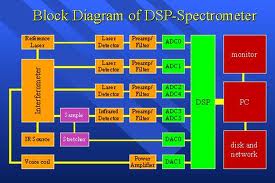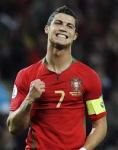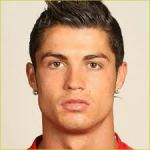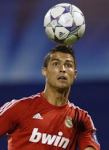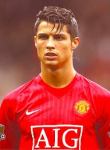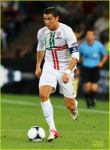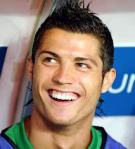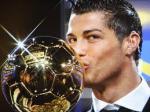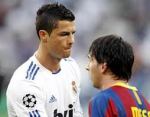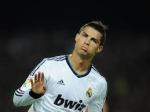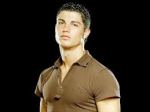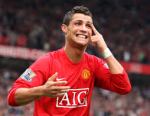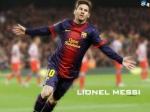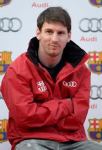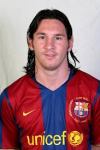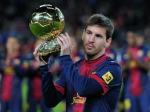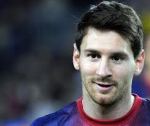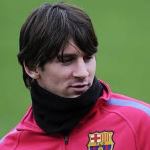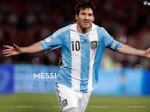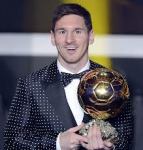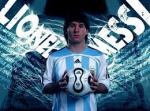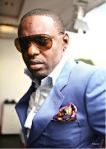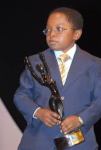Author Archives: christinme0018
WiBro
WiBro (Wireless Broadband) is a wireless broadband Internet technology developed by the South Korean telecoms industry. WiBro is the South Korean service name for IEEE 802.16e (mobile WiMAX) international standard. By the end of 2012, the Korean Communications Commission intends to increase WiBro broadband connection speeds to 10Mbit/s, around ten times the current speed, which will complement their 1Gbit/sec fibre-optic network.[1]
WiBro adopts TDD for duplexing, OFDMA for multiple access and 8.75/10.00 MHz as a channel bandwidth. WiBro was devised to overcome the data rate limitation of mobile phones (for example CDMA 1x) and to add mobility to broadband Internet access (for example ADSL or Wireless LAN). In February 2002, the Korean government allocated 100 MHz of electromagnetic spectrum in the 2.3–2.4 GHz band, and in late 2004 WiBro Phase 1 was standardized by the TTA of Korea and in late 2005 ITU reflected WiBro as IEEE 802.16e (mobile WiMAX). Two South Korean Telcom (KT, SKT) launched commercial service in June 2006, and the tariff is around US$30.
WiBro base stations offer an aggregate data throughput of 30 to 50 Mbit/s per carrier and cover a radius of 1–5 km allowing for the use of portable internet usage. In detail, it provides mobility for moving devices up to 120 km/h (74.5 mi/h) compared to Wireless LAN having mobility up to walking speed and mobile phone technologies having mobility up to 250 km/h. From testing during the APEC Summit in Busan in late 2005, the actual range and bandwidth were quite a bit lower than these numbers. The technology will also offer Quality of Service. The inclusion of QoS allows for WiBro to stream video content and other loss-sensitive data in a reliable manner. These all appear to be (and may be) the stronger advantages over the fixed WiMAX standard (802.16a). Some Telcos in many countries were trying to commercialize this Mobile WiMAX (or WiBro). For example, TI (Italy), TVA (Brazil), Omnivision (Venezuela), PORTUS (Croatia), and Arialink (Michigan) provided commercial service at some stage. While WiBro is quite precise in its requirements from spectrum use to equipment design, WiMAX leaves much of this up to the equipment provider while providing enough detail to ensure interoperability between designs.
WIMAX

A gauche : équipements pour l’alimentation électrique. A droite : équipements de transmission WiMAX. Voir photos de près et explications ci-dessous. (Photo credit: Wikipedia)
WiMAX (Worldwide Interoperability for Microwave Access) is a wireless communications standard designed to provide 30 to 40 megabit-per-second data rates,[1] with the 2011 update providing up to 1 Gbit/s for fixed stations. The name “WiMAX” was created by the WiMAX Forum, which was formed in June 2001 to promote conformity and interoperability of the standard. The forum describes WiMAX as “a standards-based technology enabling the delivery of last mile wireless broadband access as an alternative to cable and
Terminology[edit]
WiMAX refers to interoperable implementations of the IEEE 802.16 family of wireless-networks standards ratified by the WiMAX Forum. (Similarly, Wi-Fi, refers to interoperable implementations of the IEEE 802.11 Wireless LAN standards certified by the Wi-Fi Alliance.) WiMAX Forum certification allows vendors to sell fixed or mobile products as WiMAX certified, thus ensuring a level of interoperability with other certified products, as long as they fit the same profile.
The original IEEE 802.16 standard (now called “Fixed WiMAX”) was published in 2001. WiMAX adopted some of its technology from WiBro, a service marketed in Korea.[3]
Mobile WiMAX (originally based on 802.16e-2005) is the revision that was deployed in many countries, and basis of future revisions such as 802.16m-2011.
WiMAX is sometimes referred to as “Wi-Fi on steroids”[4] and can be used for a number of applications including broadband connections, cellular backhaul, hotspots, etc. It is similar to Wi-Fi, but it can enable usage at much greater distances.[5]
cristiano ronaldo
 Cristiano Ronaldo dos Santos Aveiro,[2] OIH, (born 5 February 1985),[3] commonly known as Cristiano Ronaldo, is a Portuguese footballerwho plays as a forward for Spanish La Liga club Real Madrid and who serves as captain of the Portuguese national team. He became the most expensive footballer in history after moving from Manchester United to Real Madrid in a transfer worth £80 million (€93.9 million/$131.6 million). In addition, his contract with Real Madrid, in which he is paid €12 million per year, makes him one of the highest-paid footballers in the world,[4]and his buyout clause is valued at €1 billion as per his contract.[5]
Cristiano Ronaldo dos Santos Aveiro,[2] OIH, (born 5 February 1985),[3] commonly known as Cristiano Ronaldo, is a Portuguese footballerwho plays as a forward for Spanish La Liga club Real Madrid and who serves as captain of the Portuguese national team. He became the most expensive footballer in history after moving from Manchester United to Real Madrid in a transfer worth £80 million (€93.9 million/$131.6 million). In addition, his contract with Real Madrid, in which he is paid €12 million per year, makes him one of the highest-paid footballers in the world,[4]and his buyout clause is valued at €1 billion as per his contract.[5]
Ronaldo began his career as a youth player for Andorinha, where he played for two years, before moving to C.D. Nacional. In 1997, he made a move to Portuguese giants Sporting Clube de Portugal. Ronaldo caught the attention of Manchester United manager Alex Ferguson, who signed him for £12.24 million (€15 million) in 2003. The following season, Ronaldo won his first club honour, the FA Cup.
Ronaldo was the first player to win all four main PFA and FWA awards, doing so in 2007. In 2008, Ronaldo won the Ballon d’Or.[6] He placed second in the Ballon d’Or in 2007, 2009, 2011 and 2012. He was awarded the European Golden Shoe in both 2008 and 2011. In 2008, he won three of the four main PFA and FWA trophies and was named the FIFPro Player of the Year, World Soccer Player of the Year, Onze d’Or, and the FIFA World Player of the Year.[7][8][9] In 2007 and 2008, Ronaldo was named FWA Footballer of the Year. Ronaldo was the inaugural winner of the FIFA Puskás Award in 2009.
Ronaldo is considered one of the best footballers in the world. He holds numerous former and current scoring records, including records for most goals scored in a season for Real Madrid, most goals scored per minute in La Liga, first top European league player to reach 40 goals in a single season in two consecutive years, fastest Real Madrid player to reach one hundred league goals, and the first player ever to score against every team in a single season in La Liga.[10] In January 2013, Cristiano Ronaldo scored his 300th club goal.[11][12]
Ronaldo is a Portuguese international and made his debut against Kazakhstan in August 2003. He has since participated in five major tournaments; UEFA Euro 2004, the 2006 FIFA World Cup, UEFA Euro 2008, the 2010 FIFA World Cup and UEFA Euro 2012. He scored his first international goal in the opening game of the Euro 2004 against Greece, in addition to helping Portugal reach the final. He took over the captaincy of the side in July 2008 and went on to captain Portugal to the semi-finals at the Euro 2012 and finished the competition as the joint best scorer with three goals. On 16 October 2012, Ronaldo won his 100th cap against Northern Ireland, making him the third highest capped player for Portugal and became the third youngest European to reach a century of international appearances.[13]
lionel messi
Lionel Andrés “Leo” Messi (Spanish pronunciation: [ljoˈnel anˈdɾes ˈmesi], born 24 June 1987) is an Argentine footballer who plays as a forward for La Liga club FC Barcelona and the Argentina national team. He serves as the captain of his country’s national football team. By the age of 21, Messi had received Ballon d’Or and FIFA World Player of the Year nominations. The following year, in 2009, he won his first Ballon d’Or[2] and FIFA World Player of the Year awards. He followed this up by winning the inaugural FIFA Ballon d’Or in 2010,[3] and again in 2011[4] and 2012.[5] He also won the 2010–11 UEFA Best Player in Europe Award. At the age of 24, Messi became Barcelona’s all-time top scorer in all official club competitions.[6]At age 25, Messi became the youngest player to score 200 La Liga goals.[7][8]
Commonly rated by commentators, coaches and colleagues as the best footballer in the world and as one of the greatest players in the history of the game,[9][10][11][12][13][14] Messi is the first football player in history to win four FIFA/Ballons d’Or – all of which he won consecutively – as well as the first to win three European Golden Shoe awards. Messi has won six La Ligas, two Copas del Rey, five Supercopas de España, three UEFA Champions Leagues, two Super Cups and two Club World Cups. In March 2012, Messi made Champions League history by becoming the first player to score five goals in one match.[15] He also matched José Altafini‘s record of 14 goals in a single Champions League season.[16] Messi became the first player to top-score in four successive Champions League campaigns.[17][18] He set the European record for most goals scored in a season during the 2011–12 season, with 73 goals.[19] In the same season, he set the current goalscoring record in a single La Liga season, scoring 50 goals.[20] On 16 February 2013, Messi scored his 300th Barcelona goal.[21] On 30 March 2013, Messi scored in his 19th consecutive La Liga game, becoming the first footballer in history to net in consecutive matches against every team in the league.[22]
Messi was the top scorer of the 2005 FIFA World Youth Championship with six goals. In 2006, he became the youngest Argentine to play in theFIFA World Cup and he won a runners-up medal at the Copa América tournament the following year, in which he was elected young player of the tournament.[23] In 2008, he won his first international honour, an Olympic gold medal, with the Argentina Olympic football team. Sportspro has rated Lionel Messi as the third most marketable athlete in the world.[24] His playing style and stature have drawn comparisons to compatriot Diego Maradona, who himself declared Messi his “successor“.[25]
Cinema of Nigeria
The cinema of Nigeria grew quickly in the 1990s and 2000s to become the second largest film industry in the world in terms of number of annual film productions, placing it ahead of the United States and behind only the Indian Cinema (Tamil Cinema, Telugu Cinema, Hindi Cinema,etc).[1][2] According to Hala Gorani and Jeff Koinange formerly of CNN, Nigeria has a US$250 million movie industry, creating some 200 videos for the home video market every month.[3][4]
Nigerian cinema is Africa’s largest movie industry in terms of both value and the number of movies produced per year. Although Nigerian films have been produced since the 1960s, the rise of affordable digital filming and editing technologies has stimulated the country’s video film industry. The Nigerian video feature film industry is sometimes colloquially known as Nollywood, having been derived as a play on Hollywood in the same manner as Bollywood from Bombay, India
The first Nigerian films were made by filmmakers such as Ola Balogun and Hubert Ogunde in the 1960s, but they were frustrated by the high cost of film production.[6] However, television broadcasting in Nigeria began in the 1960s and received much government support in its early years. By the mid-1980s every state had its own broadcasting station. Law limited foreign television content so producers in Lagos began televising local popular theater productions. Many of these were circulated on video as well, and a small scale informal video movie trade developed.
The release of the box-office movie Living in Bondage in 1992 by NEK Video Links owned by Kenneth Nnebue in the eastern city of Onitsha set the stage for Nollywood as it is known today. The story goes that Kenneth Nnebue had an excess number of imported video cassettes which he then used to shoot the first film.[7] The huge success of this film set the pace for others to produce other films or home videos. Through the business instincts and ethnic links of the Igbo and their dominance of distribution in major cities across Nigeria, home videos began to reach people across the country. Nollywood exploded into a booming industry that pushed foreign media off the shelves, an industry now marketed all over Africa and the rest of the world.[8] The use of English rather than local languages served to expand the market and aggressive marketing using posters, trailers, and television advertising also played a role in Nollywood’s success.
Since then, thousands of movies have been released. One of the first Nigerian movies to reach international renown was the 2003 release Osuofia in London, starring Nkem Owoh, the famous Nigerian comedic actor. Modern Nigerian cinema’s most prolific auteur is Chico Ejiro (“Mr. Prolific”), who directed over 80 films in an 8-year period and brags that he can complete production on a movie in as little as three days.[9] Ejiro’s brother Zeb is the best-known director of these videos outside of the country.
The first Nollywood films were produced with traditional analog video, such as Betacam SP, but today almost all Nollywood movies are produced using digital video technology.[10][11][12][13] The Guardian has cited Nigeria’s film industry as the third largest in the world in terms of earnings and estimated the industry to bring in US$200 million per year.[14][15] As the paper cites the success can also be attributed to Ghanaian films[16] Nollywoods biggest competition on the African continent is the Ghanaian film industry, and Nigerian film makers usually collaborate with Ghanaianactors and directors. Van Vicker a popular Ghanaian actor has starred in many Nigerian movies and famous Nollywood actress Genevieve Nnaji has also starred in many Ghanaian films. Due to their collaborations Western viewers oftentimes confused Ghanaian movies with Nollywood and count their sales as one; however they are two different independent industries. That share sometimes share the colloquial Nollywood. In 2009, Unesco described Nollywood as being the second-biggest film industry in the world after Bollywood in terms of output and called for greater support for the industry, which is the second-largest employer in Nigeria.[17]
lectures
sport
Second Pérez and Mourinho era (2009–2013)
On 1 June 2009, Florentino Pérez regained Real Madrid’s presidency.[33][34] Pérez continued with the Galácticos policy pursued in his first term, buying Kakáfrom Milan,[35] and then purchasing Cristiano Ronaldo from Manchester United for a record breaking £80 million. José Mourinho took over as manager in May 2010.[36][37] In April 2011, a strange occurrence happened, for the first time ever, four Clásicos were to be played in a span of eighteen days. The first fixture was for the Liga campaign on 17 April (which ended 1–1 with penalty goals for both sides), the Copa del Rey final (which ended 1–0 to Madrid), and the controversial two-legged Champions League semifinal on 27 April and 2 May (3–1 loss on aggregate) to Barcelona. The first Clasico saw Cristiano Ronaldo get his first goal against Barcelona due to a penalty given to Madrid after a foul to Marcelo. The Copa del Rey final gave Real Madrid its first title under Mourinho with a header from Cristiano Ronaldo in extra time. The Champions League semifinal was perhaps the most controversial of the four, with the expulsion of Pepe in the first leg at the Santiago Bernabéu, after an alleged “dangerous challenge” to Barcelona defender Daniel Alves. Alves was carried out in a stretcher “unable to walk”, but after Pepe was shown red, Alves came running back into the field within seconds. After Pepe’s sending off, coach José Mourinho was also sent off, receiving a fine and a five-match ban. This same match was also controversial in that Barcelona midfielderSergio Busquets being captured on video saying what seemed like a supposed racial slur to Madrid left-back Marcelo. The second leg was not as controversial as the first, with perhaps the exception of an annulled goal to Gonzalo Higuaín, after Cristiano Ronaldo was deemed to have fouled Javier Mascherano as a result of a foul to Ronaldo by Gerard Piqué.[38] In the 2011–12 La Liga season, Real Madrid won the league, a record 32nd time in La Liga history and finished the season with a number of records including 100 points in a single season, a record 121 goals scored & goal difference of +89, and a record 16 away wins and 32 overall wins.[39] In the same season, Cristiano Ronaldo become the fastest player to reach 100 goals in Spanish league history. In reaching 101 goals in 92 games, Ronaldo surpassed Real Madrid legend Ferenc Puskás, who scored 100 goals in 105 games. Ronaldo set a new club mark for individual goals scored in one year (60), and became the first player ever to score against all 19 opposition teams in a single season.[40][41]
Crest and shirt
Nigeria
Prehistory

The Nok people of central Nigeria produced the earliest terracotta sculptures found in the country.[7] In the northern part of the country, Kano and Katsina have a recorded history dating back to around 999 AD. Hausa kingdoms and the Kanem-Bornu Empire prospered as trade posts between North and West Africa.
Also in the North, at the beginning of the 19th century under Usman dan Fodio, the Fulani led the centralized Fulani Empire, which continued until 1903 when the Fulani population and land were divided into various European colonies. Between 1750 and 1900, one to two-thirds of the population of the Fulani jihad states consisted of slaves.[8]

The royal Bini mask of ivory, one of Nigeria’s most recognized artifacts
The Yoruba kingdoms of Ife and Oyo in southwestern Nigeria became prominent in the 12th[9][10] and 14th[11] century respectively. Yoruba mythology states that Ile-Ife is the source of the human race and that it pre-dates any other civilization. The oldest signs of human settlement dates back to the 9th century.[9] Ifẹ produced terracotta and bronze figures, and Ọyọ once extended from western Nigeria to Togo. The Kingdom of Benin is located in southwestern Nigeria. Benin’s power lasted between the 15th and 19th century. Their dominance reached as far as the city of Eko (an Edo name later changed to Lagos by the Portuguese) and further.[12]
The Kingdom of Nri of the Igbo people started in the 10th century and continued until it lost its sovereignty to the British in 1911. It is one of the oldest kingdoms in Nigeria.[13][14] Nri was ruled by the Eze Nri, and the city of Nri is considered to be the foundation of Igbo culture. Nri and Aguleri, where the Igbo creation myth originates, are in the territory of the Umeuri clan; they trace their lineages back to the patriarchal king-figure Eri.[15] The oldest pieces of bronzes made out of the lost-wax process in West Africa were from Igbo Ukwu, a city under Nri influence.[13]
The people traded overland with traders from North Africa for centuries. In the 16th century, Spanish and Portuguese explorers were the first Europeans to begin trade in Nigeria, in the port they named Lagos and in Calabar. The Europeans traded goods with the peoples of the coast. Soon they also negotiated for a portion of the existing African slave trade. Traditionally, peoples captured in war were made slaves by the conquerors. Usually they were taken back to the conquerors’ territory, put to work and sometimes acculturated and eventually absorbed into the other culture. When the Europeans entered the trade, they transported slaves mostly to the Americas to work as laborers. Particularly in what became the United States,[citation needed] slavery became a permanent racial caste to which people of African descent were confined. The demands of the slave trade produced a greater market in slaves than had existed before. Nigerian ethnic groups were transported to the Americas and the Caribbean as part of the African diaspora of slavery.
